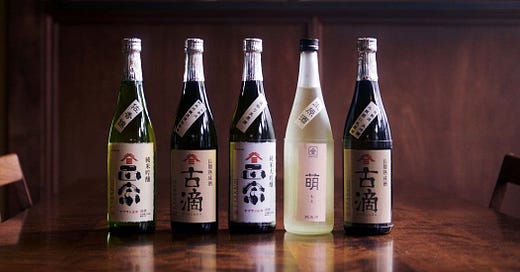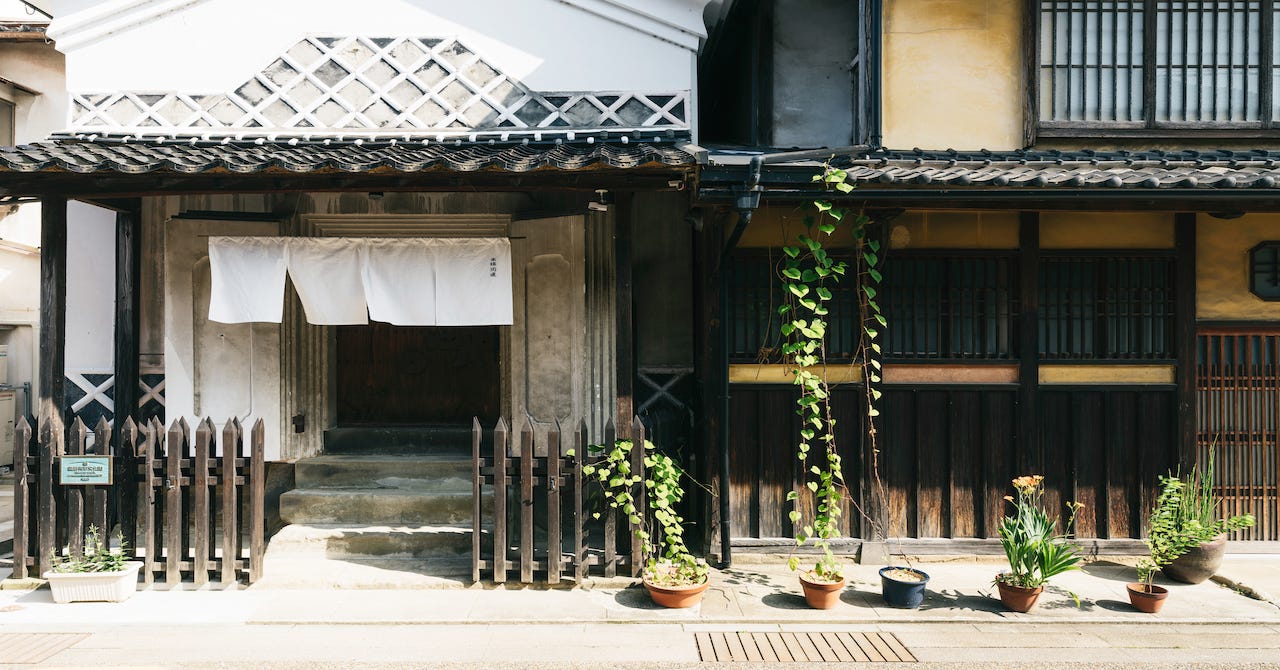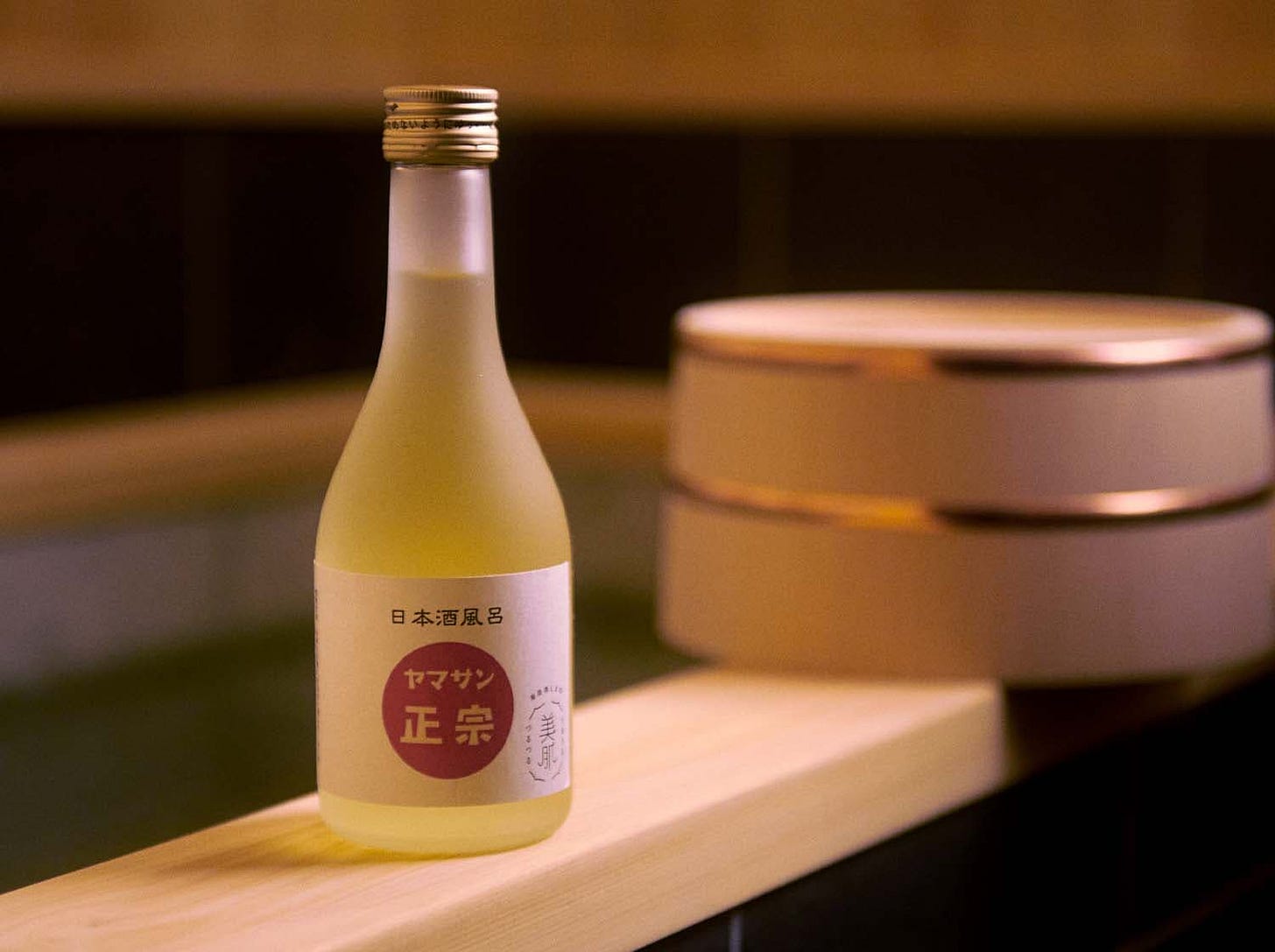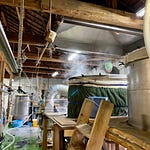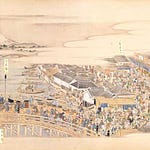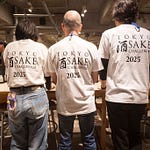Welcome to Issue #72 of SIN.
Although the calendar says autumn is here, the weather tells a different story. The summer heat and humidity have definitely outstayed their welcome and we're ready for things to cool down a bit.
And speaking of autumn, we all know that means hiya-oroshi and akiagari!
Hiya-oroshi and aki-agari, you can drink either or both, but thanks to these seasonal brewers, the fall is always a highly anticipated season on the sake calendar. So polish off the last of your natsuzake and make some room in the fridge, because the autumn releases are rolling in thick and fast.
And if that wasn't enough to have us excited, the onset of autumn also means it's nearly time for World Sake Day. It's just two weeks away until the sake world lets its hair down on October 1 for a day (and night) of sake celebration before the hard slog of another season begins - at least for those that actually make sake. The rest of us get to wait from the comfort of our homes, bars, and restaurants for the yields of 2022 to start coming down the pike.
And we can hardly wait.
But for now, here's the news...
Oriental Sake Award Winners Announced
Hong Kong- The winners of the first Oriental Sake Awards were announced this month. The Oriental Sake Awards were held in Hong Kong and judged by some of Asia’s top sake palates.
Haruo Matsuzaki, sake journalist, president of Sake Marketing House and co-chairman of the Oriental Sake Awards provided some insight into the new addition to the sake awards scene.
"Hong Kong has a very strong and active sake import market with many labels being brought into the country. However much of the sake is priced extraordinarily high. Hong Kong sake professionals started this competition to give everyday consumers a better insight into where the true value of Japanese sake lies."
The Federation of Japanese Sake Industry in Hong Kong was founded in November 2021 and subsequently created the Oriental Sake Awards. The organization is headed by Chairman and Sake Samurai, Micky Chan.
Matsuzaki noted the historic bias in the market in Hong Kong that leans toward ginjō-style sake present in the number of sake that were submitted in the junmai ginjō and junmai daiginjō divisions. In fact there were four ginjō categories in the competition:
Junmai ginjō/daiginjō (light) , Junmai ginjō/daiginjō (full-body) , Ginjō/daiginjō (light) , Ginjō/daiginjō (full-body)
An open namazake category and sparkling category were also assessed. However, the awards were designed to include a honjōzō division to also recognize sake that offers consumers quality and value for money.
Out of the 30 judges, three were Japanese (two of whom are Hong Kong residents). All other judges were Hong Kong-based beverage professionals. Matsuzaki noted that many judges valued clean, clear styles of sake, as well as robust, impactful sake, producing results that reflect the current tastes of the Hong Kong market.
Source - Oriental Sake Awards
JG: The number of sake competitions held overseas continues to grow, and while there are various opinions held about them, they are clearly indicative of how serious people around the world are taking sake - and that is a good thing. Hong Kong is a massive sake market, as is of course Asia overall. Not surprisingly, the contest was a bit skewed in favor of expressive sake like ginjo and nama.The preferences of the judges are in line with what is happening around the world, and are a good, solid angle of assessment and appreciation.
Bed And Breakfast And A Sake Bath
Shimane- Sakemochida Honten (maker of Yamasan Masamune) has made good use of some of the brewery's old structures by converting an old kura building into a countryside lodging for visitors. The new RITA Izumo Hirata Sakemochidagura opened on September 17.
The old structure had been used for storage until the owners decided to make better use of the facilities while also helping revitalize the local community. The brewery's wooden structures are registered as designated tangible cultural properties.
The lodge is designed for guests to not only enjoy drinking sake, but also work on their beauty routine with a sake bath as part of the amenities. The Yamasan Masamune Bihadaken Shimane bath contains a sake-based blend of more than 10 active ingredients to beautify skin, produced by the Shimane Industrial Technology Center.
Guests can enjoy dinner at nearby Italian restaurant, Trattoria 814, where a 10-course dinner is offered using local organic produce alongside perfect sake pairings from Sakemochida Honten.
Source - PR Times
JG: Brilliant use of resources and a clever shift to revitalize business and the local community. And it is far enough into the countryside to qualify as a bona fide getaway! I have heard that sake baths can help one sleep really, really well too.
酒持田本店 ヤマサン正宗 , 日本酒風呂専用ヤマサン正宗 美肌県しまね
And The Most Popular Sake Region Is...
Japan- Data collection site, Netlabo has released the results of an annual poll to discover the most popular regions for sake in Japan.
Listen to this episode with a 7-day free trial
Subscribe to Sake Industry News to listen to this post and get 7 days of free access to the full post archives.

